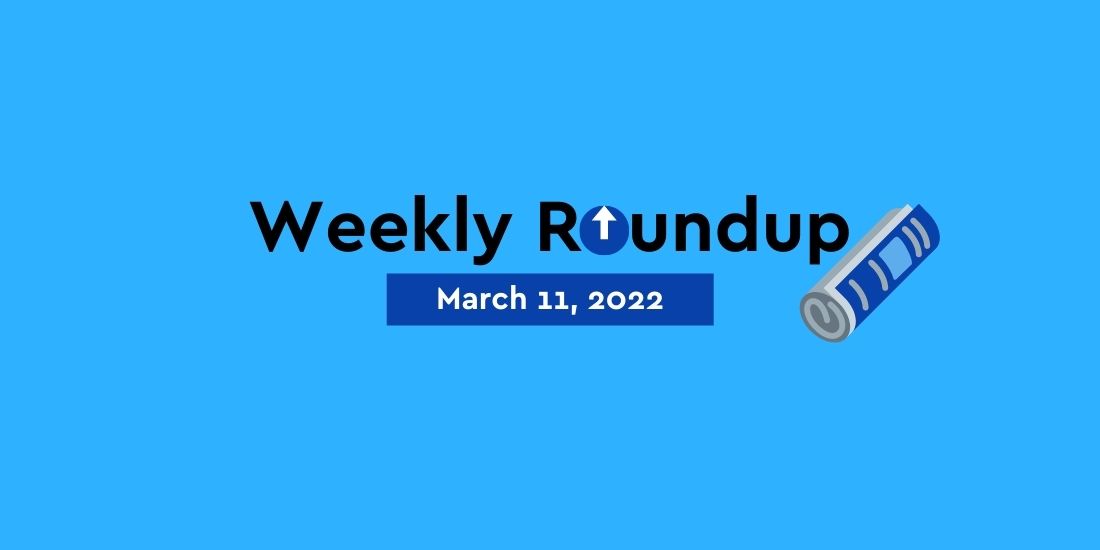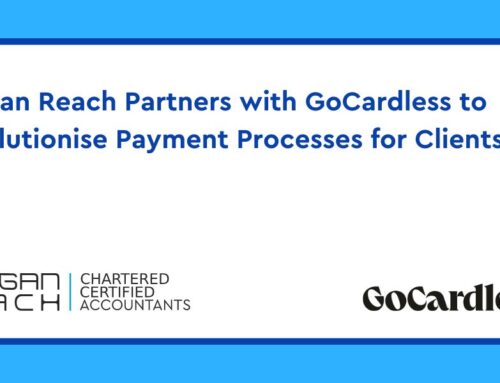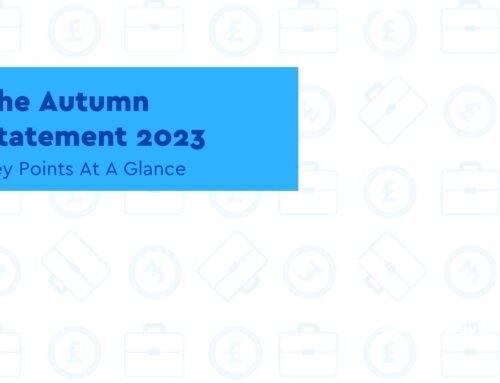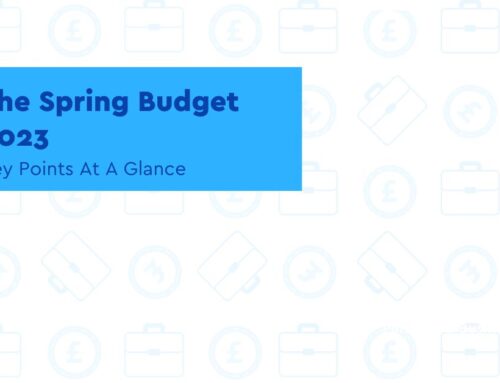News – HMRC
HMRC asks businesses to label NIC rise on payslips
Key Points
- The tax authority recently sent out a statement in its emails and bulletins to all registered employers
- From 2023 the rate for NICs will return to the current level and the Social Care Levy will be highlighted on payslips
HMRC is requesting employers include a message on the payslips of employees affected by the national insurance increase between 6 April 2022 and 5 April 2023, explaining the increased contribution.
The tax authority recently sent out a statement in its emails and bulletins to all registered employers asking them to consider highlighting the increase in order to help employees to understand what the increase would be funding.
The statement released by HMRC said: ‘We are therefore requesting that employers include a message for affected employees on all payslips between 6 April 2022 and 5 April 2023, explaining the increased National Insurance contribution. The message should read: 1.25% uplift in NICs funds NHS, health and social care’.
HMRC also stated in their monthly bulletin that they had been in contact with payroll software providers to request that they include the message in their software and wider support models.
From 2023 the rate for NICs will return to the current level and the Social Care Levy will be highlighted on payslips.
HMRC confirmed that the suggestion had been made, however it was not mandatory for employers to include the message, but it was ‘strongly encouraged’.
Despite the backlash over the increase, which was announced in parliament in September last year, the government has stated multiple times that it is to continue with the move despite the current concerns over the cost of living crisis.
How the levy will affect you
Between April 6, 2022 and April 5, 2023
If you are an employer, employee or self-employed (and below the State Pension age), you will pay the 1.25 percentage points increase in National Insurance contributions.
From April 6, 2023
The separate levy of 1.25% will apply to the same amounts for the following classes of National Insurance contributions:
- Class 1 that are above the primary and secondary thresholds
- Class 1A and Class 1B for employers
- Class 4 for the self-employed
All existing National Insurance contribution reliefs will apply to the separate levy for:
- Employees under the age of 21
- Apprentices under the age of 25
- Qualifying Freeport employees
- Those eligible for the Employment Allowance
- Armed forces veterans
HMRC will collect the levy through existing PAYE payroll and Self Assessment systems.
If you’re an employer
If your business pays Class 1, Class 1A or Class 1B National Insurance contributions, you’ll need to start paying the 1.25 percentage points increase in contributions from 6 April 2022. You’ll then need to pay the separate 1.25% levy from 6 April 2023.
You may also have to pay the separate levy from 6 April 2023 for employees who are over State Pension age. Find out more information in the ‘If you’re above the State Pension age’ section.
Those liable to pay National Insurance contributions will also be liable to pay the levy. Existing employer reliefs and allowances that apply to National Insurance contributions will also apply to the levy.
Earnings on which National Insurance contributions are calculated will also be used to calculate the separate levy.
Information will be available later in 2022 on how to report the levy from April 2023.
When you will not have to pay the extra 1.25%
If your employee falls into one of the following categories and earns less than £50,270 (or £25,000 for Freeport employees) per year, existing reliefs will apply for:
- Apprentices under the age of 25
- Employees under the age of 21
- Armed forces veterans
- Employees in Freeports
If you’re self-employed
Check the table to find out if you’ll have to pay one or both of the following:
- The 1.25 percentage points increase in National Insurance contributions for the tax year April 2022 to April 2023
- The separate 1.25% levy from 6 April 2023 onwards
| Self-employed type | Do I pay the 1.25 percentage points increase in National Insurance contributions for tax year 6 April 2022 to 5 April 2023? | Do I pay the separate 1.25% levy from 6 April 2023? |
| I have profits more than the Lower Profits Limit for Class 4 National Insurance contributions | Yes | Yes |
| I pay Class 2 National Insurance contributions only | No — the levy does not apply to Class 2 National Insurance contributions | No — the levy does not apply to Class 2 National Insurance contributions |
| I’m above the State Pension age before 6 April 2022 with profits more than the Lower Profits Limit | No — because you do not pay National Insurance contributions | Yes — you must pay this using Self Assessment |
| I reach State Pension age in the tax year 6 April 2022 to 5 April 2023 with profits more than the Lower Profit Limit | Yes — because you’ll continue paying Class 4 contributions until the end of the tax year in which you reach State Pension age | Yes |
You’ll pay the Health and Social Care Levy as you would other taxes, using Self Assessment.
You should pay the first deduction of this tax year on your 2023 to 2024 tax return, in January 2025.
Check the rates and allowances for National Insurance contributions.
If you’re an employee
Check the table to find out if you’ll have to pay one or both of the following:
- the 1.25 percentage points increase in National Insurance contributions for the tax year April 2022 to April 2023
- the separate 1.25% levy from 6 April 2023 onwards
| Employee type | Do I pay the 1.25 percentage points increase in National Insurance contributions for tax year 6 April 2022 to 5 April 2023? | Do I pay the separate 1.25% levy from 6 April 2023? |
| I pay Class 1 National Insurance contributions above the primary threshold | Yes | Yes |
| I’m above the State Pension age and earn above the primary threshold | No — because you do not pay National Insurance contributions | Yes |
Check the rates and allowances for National Insurance contributions.
Your employer will deduct the levy from your earnings. They will pay this to HMRC on your behalf using the PAYE payroll system.
If you have to pay the 1.25 percentage points increase in National Insurance contributions, check your payslips. HMRC are asking employers to include the following message: ‘1.25% uplift in NICs, funds NHS, health & social care’.
If you pay the separate 1.25% levy from April 2023, your employer should make sure it’s clearly shown on those payslips.
Find out more information from the Pensions Advisory Service.
If you’re above the State Pension age
Check the table to find out if you’ll have to pay one or both of the following:
- The 1.25 percentage points increase in National Insurance contributions for the tax year April 2022 to April 2023
- The separate 1.25% levy from 6 April 2023 onwards
| Above State Pension age type | Do I pay the 1.25 percentage points increase in National Insurance contributions for tax year 6 April 2022 to 5 April 2023? | Do I pay the separate 1.25% levy from 6 April 2023? |
| I’m an employee above the State Pension age earning less than the primary threshold | No — because you do not pay National Insurance contributions | No |
| I’m an employee above the State Pension age earning more than the primary threshold (Class 1) | No — because you do not pay National Insurance contributions | Yes — your employer will deduct the levy for you using PAYE payroll |
| I’m self-employed and I’m above the State Pension age before 6 April 2022 with profits more than the Lower Profits Limit | No — because you do not pay National Insurance contributions | Yes — you must pay this using Self Assessment |
| I’m self-employed and I reach State Pension age in the tax year 6 April 2022 to 5 April 2023 with profits more than the Lower Profit Limit | Yes — because you’ll continue paying Class 4 contributions until the end of the tax year in which you reach State Pension age |
This article was sourced from gov.uk: https://www.gov.uk/guidance/prepare-for-the-health-and-social-care-levy#full-publication-update-history
News – Spring Statement
Calls for relief for small employers in the forthcoming Spring Statement
Key Points
- FSB urges Government to mitigate impact of NICs and dividend taxation hikes taking effect in April
- National Living Wage also set to increase in April as business support measures end
With a month to go until the jobs tax hike is brought in, the FSB is calling for relief for small employers in the forthcoming Spring Statement.
The UK’s largest business group is urging the Government to help small employers with spiralling overheads as today marks one month until an £18bn collective annual increase in dividend taxation and NICs for employers, employees and sole traders takes effect.
FSB is recommending an increase to the targeted Employment Allowance – which entitles small employers to a discount on their NICs bills – to £5,000 to free up funds for investment and expansion.
Analysis from the group shows that the planned 1.25 percentage point increase in employer NICs will add more than £3,000 to the annual tax bill of the average SME employer.
In the North West of England and West Midlands – where the Government plans to launch innovator accelerators as part of its levelling up agenda – the collective cost of the NICs increase to small employers is set to surpass £800 million a year.
On 1 April, the National Living Wage will increase to £9.50 for those over the age of 23. At the same time, business rates discounts for high street firms in England will drop in value and a lower rate of VAT for hospitality businesses will no longer apply.
Last month, the Office for National Statistics revealed that the growth rate of input prices paid by businesses producing goods has surpassed 13%.
FSB National Chair Mike Cherry said: “The Government’s levelling up plans are now at serious risk. The chilling impact of National Insurance hikes will hit the pay of those in regions that need help the most.
“Slamming small firms with a jobs tax hike will put the brakes on investment, upskilling and growth within communities most affected by the pandemic.
“At its forthcoming Spring Statement, the Government can still make a difference by increasing the Employment Allowance to £5,000 and adopting our proposal to take an additional 200,000 small firms out of the business rates system in levelling up target areas.
“Once we reach April, we’ll be faced with rising taxes, an end to business support measures and mounting inflationary pressure. The clock is ticking.
“The business community shrank in size by 400,000 last year. Unless the Government changes course, history is set to repeat itself.”
This article was sourced from an FSB press release: https://www.fsb.org.uk/resources-page/act-now-to-avert-800m-hit-to-levelling-up-areas-small-firms-urge-with-one-month-to-nics-hike.html
News – Tax Allowances
Tax year-end allowances reminder
Key Points
- Every tax year you can put money into one of each kind of ISA, saving up to £20,000
- Everyone gets a £2,000 tax-free dividend allowance and is especially useful for small business owners
The end of the tax year is fast approaching which means there’s just a month left to take advantage of all the tax-efficient allowances available to you.
Capital gains tax allowance
One of the most underused tax allowances, you only have to pay Capital Gains Tax on your overall gains above your tax-free allowance (called the Annual Exempt Amount).
The Capital Gains tax-free allowance is:
- £12,300
- £6,150 for trusts
You can see tax-free allowances for previous years.
You may also be able to reduce your tax bill by deducting losses or claiming reliefs – this depends on the asset.
If it gets near the end of the tax year, and the allowance hasn’t been used,you can look at your portfolio and see if there are alternatives to those investments bulging with gains. Many also use this allowance to generate a tax-free income.
Use your ISA allowance
Every tax year you can put money into one of each kind of ISA. The tax year runs from April 6 to April 5. You can save up to £20,000 in one type of account or split the allowance across some or all of the other types.
You can only pay £4,000 into your Lifetime ISA in a tax year. Your ISAs will not close when the tax year finishes. You’ll keep your savings on a tax-free basis for as long as you keep the money in your ISA accounts.
Contribute to a pension where possible
Upfront tax relief, tax-free growth and potentially inheritance tax-free status are three benefits of contributing to a pension. The down side is taxable income when the pension is taken and having your capital tied up until at least the age of 55.
The pension contribution limit for non-earners has been frozen at £3,600 for two decades, curbing what people with no current income can save for old age.
They can put away up to £2,880 a year, to gain a maximum £720 (£3,600) or 20 per cent in tax relief from the Government into their retirement pot.
Make use of your spouse’s allowances
Many high earners have non-earning spouses. If that’s the case, organise your affairs tax efficiently so that their valuable tax-free allowances aren’t lost. Their personal allowance of £12,570 and capital gains tax allowance of £12,300 could be used by transferring assets to their name.
Don’t forget your tax-free dividend allowance
Everyone gets a £2,000 tax-free dividend allowance and is especially useful for small business owners who can time when they take dividends. You cannot count dividends as business costs when you work out your Corporation Tax.
The transferable marriage allowance
Marriage Allowance lets you transfer £1,260 of your Personal Allowance to your husband, wife or civil partner. This reduces their tax by up to £252 in the tax year. It only works when one is a non-taxpayer and the receiving partner needs to be a basic rate tax payer but you can also backdate this allowance.
Use your annual gift allowances to reduce your estate
You can reduce the value of your estate each year by gifting assets within specified limits. For those with larger estates this could be particularly useful.
Annual exemption
You can give away a total of £3,000 worth of gifts each tax year without them being added to the value of your estate. This is known as your ‘annual exemption’.
You can give gifts or money up to £3,000 to one person or split the £3,000 between several people while you can also carry any unused annual exemption forward to the next tax year – but only for one tax year.
Consider ways to reduce income tax by investing in VCTs, EIS, SEIS
For high earners who have already maxed their ISA and pension allowances, more specialised higher risk investments are available that can help reduce income tax bills, capital gains tax bills, produce tax-free growth and income.
A total of £1.3m could be invested in these three investments this tax year offering a tax rebate of £410,000 (for those lucky enough to earn that much!). You can also use EIS/SEIS to reclaim tax from the 2020/21 tax year.
An approved VCT has a number of tax advantages:
- The VCT is itself exempt from CT on chargeable gains (and losses for chargeable gains purposes are not allowable losses).
- individual investors can claim ‘front-end’ income tax relief on subscriptions of up to £200,000 (VCM51020+),
- individual investors are exempt from income tax on dividends in respect of ordinary shares acquired within the ‘permitted maximum’ of £200,000 (VCM51200), and
- individual investors are exempt from CGT on the disposal of ordinary shares acquired within the ‘permitted maximum’ of £200,000 (VCM52000+).
EIS is designed so that your company can raise money to help grow your business. It does this by offering tax reliefs to individual investors who buy new shares in your company.
Under EIS, you can raise up to £5 million each year, and a maximum of £12 million in your company’s lifetime. This also includes amounts received from other venture capital schemes. Your company must receive investment under a venture capital scheme within 7 years of its first commercial sale.
SEIS is designed to help your company raise money when it’s starting to trade. It does this by offering tax reliefs to individual investors who buy new shares in your company.
You can receive a maximum of £150,000 through SEIS investments. This will:
- Include any other de minimis state aid received in the 3 years up to and including the date of the investment
- Count towards any limits for later investments through other venture capital schemes
There are various rules you must follow so your investors can claim and keep SEIS tax reliefs relating to their shares.
Tax reliefs will be withheld, or withdrawn, from your investors if you do not follow the rules for at least 3 years after the investment is made.
This contents of this article was sourced from gov.uk
News – Car Tax
Vehicle Excise Duty changes from April 2022
Key Points
- VED is made up of two payments: standard rate and first year rate
- The first year rate is also known as a ‘showroom tax’ and is based on the CO2 figures when the vehicle was built
- The standard rate is the annual renewal you pay yearly from there onwards
Vehicle Excise Duty (also known as vehicle tax, car tax or road tax) is set to rise in line with inflation from next month and will see the cost of owning a petrol or diesel vehicle rise.
The Autumn Budget said VED would increase in line with the Retail Price Index which is typically used as a measure of inflation.
VED is made up of two payments: first year rate and standard rate.
The first year rate is also known as a ‘showroom tax’ and is based on the CO2 figures when the vehicle was built.
The standard rate is the annual renewal you pay yearly from there onwards.
Alternative fuelled vehicles, including hybrids, bioethanol and liquid petroleum gas, pay £155 per year. The amount you pay also depends on how often you want to make a payment. There’s a five per cent surcharge if you pay monthly or every six months.
In addition, cars with a list price of over £40,000 when new pay an additional rate of £355 per year on top of the standard rate, for five years. This is payable from the second year of registration; at six years old, the car reverts to the standard flat rate. Zero-emission cars are exempt from this charge.
The amount of VED you’ll pay depends on how old your car is and how environmentally friendly it is. If your car’s CO2 emissions are between 1 and 50g per km, your standard rate of car tax will increase from £155 to £165, but your first year rate will still be £10. Zero emission vehicles, including electric cars, will continue to pay £0 in VED for the first year.
Benefit in Kind (BiK) rates are also set to rise
Benefit in Kind (BiK) rates will also rise by one per cent from April 2022 in most instances:
– Electric cars, and other vehicles producing under 50g of CO2 per km, will now pay two per cent BiK instead of one per cent.
– All other vehicles will pay one per cent more, regardless of their CO2 levels.
– The exceptions to this are vehicles that produce over 156g per km – BiK rates for these vehicles will remain at 37 per cent.
Latest Snippets
Plastic Packaging Tax: steps to take
If you manufacture or import 10 or more tonnes of plastic packaging within a 12 month period, you may need to register for the tax.
It comes into effect on April 1, 2022, and affects manufacturers, producers and importers of plastic packaging including overseas businesses. It will be charged at a rate of £200 per tonne.
Plastic Packaging Tax only applies to manufacturers and importers of plastic packaging components which contain less than 30% recycled plastic.
HMRC expects all affected businesses to conduct regular and appropriate due diligence checks on its supply chain to lessen the risk of being involved in a supply chain where Plastic Packaging Tax due goes unpaid. You must register for Plastic Packaging Tax within 30 days of becoming liable for it. HMRC guidance on how to register and what information you’ll need can be found here.
UK CGT bill hits a record £13bn
The UK’s Capital Gains Tax bills jumped 20% from £10.8bn to a record high of £12.9bn in the past year, driven by three major factors:
– The cut to Entrepreneurs Relief – the lifetime limit for Entrepreneurs Relief (now Business Asset Disposal Relief) has been lowered from £10m to £1m, costing some business owners millions in extra tax when they sell their stakes
– Buy-to-let property investors taking profits in the hot housing market – the average UK house price rose 16% from January 2020 to December 2021
– The stock market rally – the FTSE 100 rose 42% from its pandemic trough to the end of 2021
The sharp increase in CGT was largely paid for by an increase in taxes on entrepreneurs selling businesses.
Entrepreneurs’ Relief was a vital incentive for individuals to start and build businesses and the 90% cut the Treasury introduced looks to have hit hard.
Get In Touch
At Morgan Reach, we understand every business needs a little help now and again-especially when it comes to the financial side of things. Therefore, to help our clients and visitors we endeavour to cover as much of the business news as possible. If you are self-employed or run a business and need assistance and advice on how these news could make a difference to you or your business, feel free to get in touch with the experts at Morgan Reach. Our business growth experts at Morgan Reach will guide you through what support is available for you or your business as well as the latest news that may affect you.







